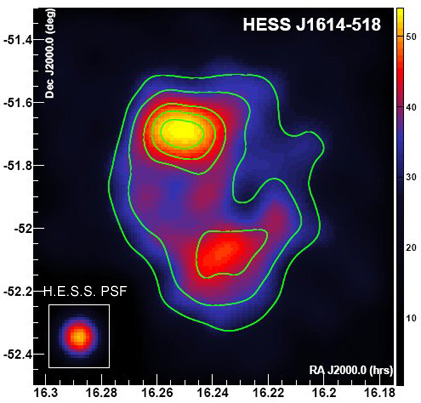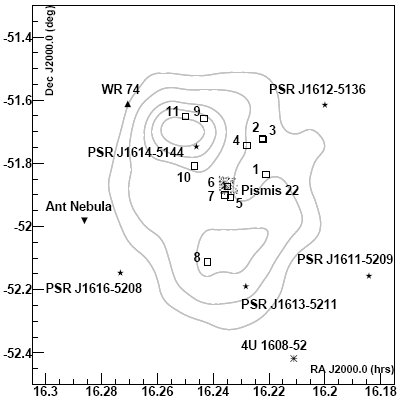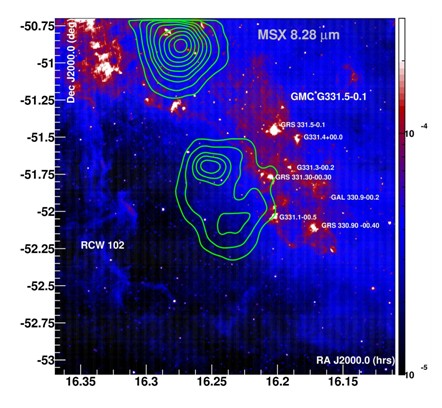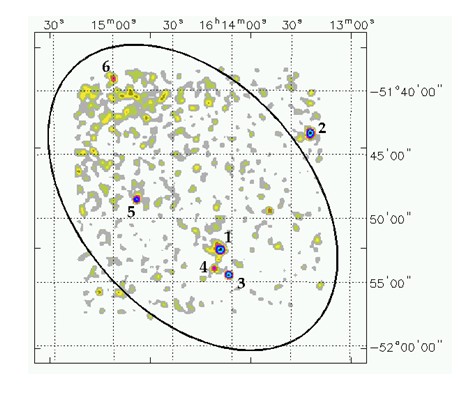A Closer Look at the Unidentified Source HESS J1614-518
September 2008

The source HESS J1614-518 was first reported in the H.E.S.S. survey of the Inner Galaxy (Aharonian et al. 2006), and could not be associated with any obvious counterpart in other wavelengths. At a quarter of the Crab flux, it is a fairly strong source. Already at that time, the source - with a typical size of 0.2 degr. rms - showed an emission peak in the north and a tail or possible second source towards the south. With additional data taken in 2007, this structure became more pronounced, see top image. There is no change in gamma-ray spectrum detectable across the source, as might be expected in case the object represents a superposition of two independent sources.
Towards identification of the source, Fig. 1 shows possible counterparts. Two pulsars, PSR J1614-5144 and PSR J1613-5211, are located close to the two emission peaks, but the spin-down energy loss of PSR J1614-5144 is many orders of magnitude to small to explain the gamma-ray luminosity, and also the stronger PSR J1613-5211 cannot plausible account for the gamma-ray flux. Infrared images (Fig. 2) as well as CO surveys show that the source is flanked by several HII regions and molecular clouds, mostly to the west, but the source does not overlap with these clouds, somewhat disfavoring cosmic-ray interactions with interstellar gas as the origin of the gamma rays. A number of X-ray sources in the region of HESS J1614-518 are seen in Swift data (Fig. 3, Landi et al. 2006, 2007) and in Suzaku and XMM-Newton data (G. Rowell et al., HDGS 2008) and represent potential counterparts. A interesting speculation is that HESS J1614-518 might be associated with the stellar cluster Pismis 22 (e.g. Piatti et al. 2000) located near the center of the gamma-ray source, which is also visible in the X-ray data. Stellar winds have long been suspected as a source of high energy particles, and the observation of gamma-ray emission from the cluster Westerlund 2 supports this picture. Given the proximity of Pismis 22, with about 1 kpc distance, stellar winds from a modest number of B-type stars would provide an ample source of energy. With its 40 Myr age, the cluster is furthermore old enough to harbor several supernova remnants which may be undetected as they expand into the rarified interstellar medium blown out by the massive stellar winds.
Reference:
The H.E.S.S.
survey of the Inner Galaxy in very high-energy gamma-rays, H.E.S.S.
collaboration, F. Aharonian et al.,
Astrophysical Journal 636 (2006) 777-797; A closer look at the unidentified
TeV source HESS J1614-518, G. Rowell, D. Horns (for H.E.S.S.), Y. Fukui, Y.
Moriguchi, Poster at the
Heidelberg
International Symposium on Gamma-Ray Astronomy, 2008.


